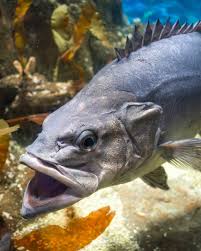Exploring the Atlantic Wreckfish and Its Importance

Introduction
The Atlantic wreckfish (Polyprion americanus) is a fascinating species known for its unique characteristics and ecological significance. Found primarily in the deep waters of the Atlantic Ocean, this species plays a crucial role in the marine ecosystem and is of interest to both commercial fisheries and conservationists. As fishing practices evolve and regulations tighten, understanding the wreckfish’s role in its habitat becomes increasingly important for sustainable management.
Habitat and Characteristics
Atlantic wreckfish are typically found at depths ranging from 200 to 1,200 metres, often inhabiting rocky environments and steep drop-offs. They are known for their large size, capable of reaching lengths of up to 1.5 metres and weights exceeding 50 kilograms. This fish possesses a robust physique, a large head, and a prominent jaw with sharp teeth, which aids in their predatory nature.
Ecological Role
Wreckfish play an important role as predators in their deep-sea environment, feeding mainly on smaller fish and invertebrates. Their presence impacts the population dynamics of species in the benthic and pelagic zones, contributing to the overall health of marine ecosystems. However, their slow growth rate and late maturity make them vulnerable to overfishing.
Commercial and Recreational Fishing
Atlantic wreckfish are targeted in commercial fisheries, particularly in areas like the northeast Atlantic and the Mediterranean Sea. The species is prized for its firm, white flesh and is often sought after by seafood markets. To combat overfishing, various regulations have been imposed, including catch limits and size restrictions aimed at ensuring the sustainability of this species. Additionally, there is growing interest in recreational fishing for wreckfish, with angler reports indicating its popularity due to its challenging catch and culinary appeal.
Conservation Efforts
In response to concerns about the declining populations of Atlantic wreckfish due to overfishing, conservation initiatives are being implemented across fishing jurisdictions. Organisations are advocating for better management practices, habitat protection, and the promotion of aquaculture as a means of relieving pressure on wild populations. Furthermore, educational programmes aimed at both fishers and consumers are vital to raise awareness about sustainable fishing practices and the importance of preserving marine biodiversity.
Conclusion
As we continue to explore the depths of our oceans, the Atlantic wreckfish remains a symbol of the delicate balance within marine ecosystems. The combined efforts of fisheries management, conservationists, and the fishing community are essential to ensure that this species thrives in the future. By understanding the ecological and economic significance of the Atlantic wreckfish, we can foster better practices that will benefit both the marine environment and future generations of seafood enthusiasts.









